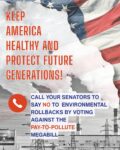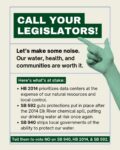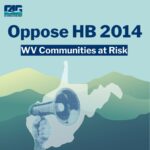- Share on Facebook
- Like
- Digg
- Tumblr
- VKontakte
- Buffer
- Love This
- Odnoklassniki
- Meneame
- Blogger
- Amazon
- Yahoo Mail
- Gmail
- AOL
- Newsvine
- HackerNews
- Evernote
- MySpace
- Mail.ru
- Viadeo
- Line
- Comments
- SMS
- Viber
- Telegram
- Subscribe
- Skype
- Facebook Messenger
- Kakao
- LiveJournal
- Yammer
- Edgar
- Fintel
- Mix
- Instapaper
- Copy Link
- Bluesky
by Vickie Wolfe
Is our tap water truly so contaminated that it’s really necessary to buy bottled drinking water? Probably not, if it comes from a regional or municipal distribution system (e.g. West Virginia American Water). This water must meet certain quality standards set forth in the federal Safe Drinking Water Act (SDWA). The legal limits for contaminants in the water are determined via toxicological testing.
In the U.S., bottled water is supposed to meet the same standards that apply to tap water. It’s worth noting, however, that a Canadian examination of 40 domestic and imported bottled water brands found that several did not meet the Canadian Water Quality Guidelines for drinking water.
Bottled water in the U.S. must also comply with “truth in advertising” laws: e.g. if the bottle says “spring water,” the water must actually come from a spring. However, if the bottle simply says “purified”—well, that’s an ambiguous term.
The only way to know for sure that the water you buy is purer than tap water is to buy water that has been purified by either reverse osmosis or distillation. However, these processes also remove dissolved minerals like calcium and magnesium that are good for us.
Bottles for drinking water, soft drinks, and many other products are made of a type of plastic called polyethylene terephthalate, abbreviated PET or PETE. Apparently most manufacturers of PET use a catalyst that contains the metal antimony. The U.S. EPA lists antimony as a possible carcinogen and priority pollutant. Small amounts of antimony leach into the water from the plastic at a constant rate—which means that the longer the water has been in the bottle, the more antimony it will contain. Still, it appears that antimony concentrations in bottled water are well below those at which there is substantial cause for concern.
Back to tap water–is the SDWA perfect? No. For one thing, it doesn’t require testing for every chemical that could possibly be in your water. Also, legal “maximum contaminant levels” (MCLs) are sometimes exceeded. By law, your drinking water supplier is supposed to send you a “consumer confidence report” each year that informs you of MCL violations during the past year.
Further, water can be safe to drink yet still taste bad. If it’s the taste of your tap water that is objectionable, first of all be sure the tap that goes to your garden hose is closed, as the hose can affect the taste of the water dispensed from other taps. You can also try running some water into a glass jug and setting the jug in the sun for a while. This will help rid the water of chlorine and may improve the taste.
Finally, if your water comes from a well, spring or cistern, the only way to know whether it meets safe drinking water standards is to have it tested periodically. Call your county health department; if they can’t test it themselves, they should be able to direct you to someone who can.
Dr. Vickie Wolfe teaches biology at Marshall University and occasionally writes for the
WV Environmental Council, www.wvecouncil.org
Permission for use is granted only when the column is used in its complete
and unabridged, unedited form. Any changes void permission to use.







